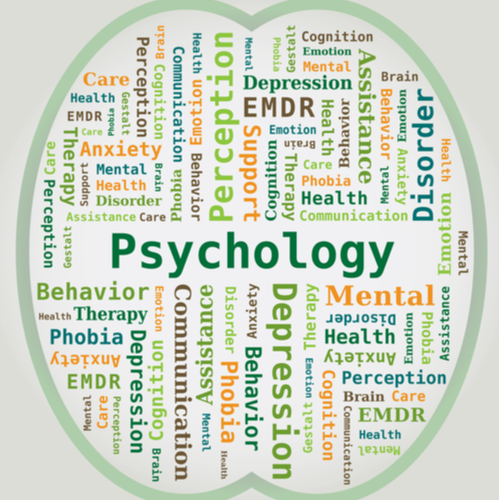
Posted November 2019 by John Sherk, B.S.W., B.S. Bible; MDiv.; 9 updates since. Reading time: 5 min. Reading level: Grade 8+. Questions on EMDR? Email Toni at: editor@online-psychology-degrees.org.
Emerging as a possible new trend in psychotherapeutic treatment, eye movement desensitization and reprocessing (EMDR) has been around for 30 years. Francine Shapiro began developing it after a walk in the woods in which she noticed her negative emotions decreased as her eyes darted from side to side. Initially, the method served to treat people suffering from PTSD but has since been applied to numerous other presenting problems. For example, some specialists even use EMDR therapy for anxiety. Could EMDR be the right treatment option for you? Are you interested in becoming an EMDR practitioner? After defining EMDR therapy, addressing its possible uses, and understanding EMDR side effects and what to expect afterward, you may decide if EMDR is the right therapy for you.
EMDR Therapy Defined
EMDR Institute defines the practice as, “a psychotherapy treatment that was originally designed to alleviate the distress associated with traumatic memories.” We know trauma creates physiological changes in the brain. Although useful to help the victim survive during the crisis, these can often inhibit the person’s ability to process and cope in the future. Even though the trauma has ended, the person affected can experience the side effects for the rest of their life if left untreated. Therefore, EMDR looks to address those physiological changes.
Rather than relying on a combination of talk therapy and medication, EMDR therapy uses rapid eye movements associated with the retelling of the trauma to decrease its emotional distress. The process during a session involves 8 phases:
- Phase 1 – the therapist evaluates the person’s ability to endure exposure to traumatic memories and then develops a treatment plan.
- Phase 2 – a therapeutic relationship is established and coping techniques to address immediate distress when recalling traumatic memories are discussed.
- Phase 3 – particular memories are identified and processed involving a vivid visual image related to the memory, a negative belief about yourself, related emotions and body sensations, and a positive belief about yourself.
- Phase 4 – the therapist helps the client process and desensitize by directing the client’s eye movements while they focus on the vivid visual image.
- Phase 5 – the client begins to associate the positive thoughts they identified in phase 3 to the process.
- Phase 6 – a mental body scan is conducted.
- Phase 7 – near the end of every session, the person will stabilize themselves using the techniques discussed in phase 2. The person will be asked to keep a log during the week of any triggering episodes that occur.
- Phase 8 – the therapist and the client evaluate the effectiveness of treatment so far.
EMDR Therapy for Anxiety
EMDR was first used to treat people suffering from PTSD. However, recent developments have made it possible to use for any number of mental health issues, including:
- Depression
- Chronic pain
- Addiction
- Psychosis
- Eating disorders
Another possible application of EMDR therapy is for anxiety. According to the EMDR Institute, over 30 studies on EMDR therapy have demonstrated its positive effects. Additionally, as many as 90% of trauma survivors appeared to have no symptoms after just three sessions. However, it’s important to note that more research on its particular impact on anxiety needs to be conducted. If you’ve read about the controversy surrounding EDMR, it usually revolves around the necessity for more research since it’s a non-traditional approach to treatment. While EDMR has proven success in addressing PTSD and depression, its usefulness in treating anxiety still needs to be empirically demonstrated.
EMDR: Side Effects and What to Expect Afterwards
If you’re interested in seeking EMDR therapy for anxiety, you might be concerned about what to expect afterward and EMDR side effects. Fortunately, doctors regard EMDR therapy as a safe practice, and it carries fewer side effects than medications. Some studies indicate that EMDR therapy has lasting effects after treatment ends.
Here are possible EMDR side effects and what to expect afterward:
- Increase in distressing memories
- Surfacing of new traumatic memories
- Lightheadedness
- Vivid dreams
- Heightened emotions or physical sensations during sessions
The goal of treatment itself is to address many of these side effects. Thus, the coping strategies someone will develop in phases 2 and 3 will help the person address these feelings and memories.
The Future of EMDR
What can we expect in the future from EMDR? With more than 20,000 practitioners trained since 1989, we can expect the knowledge and practice of EMDR to grow. Along with this, we can also expect more research. That includes research on EMDR treatment for anxiety. Also, while there remain no serious EMDR side effects, some still question its effectiveness. To truly seal its reputation as an effective treatment, a longitudinal study with a larger number of participants is needed. Finally, no study has yet to demonstrate exactly how EMDR works. Theories exist that postulate that the practice helps the brain integrate traumatic memories into the overall story of the person’s life more cohesively and coherently.
EMDR and You
If you’re considering finding an EMDR practitioner for treatment, it will be helpful to come prepared. Here are some questions you can consider asking a practitioner.
- What are your training and credentials in EMDR?
- How many people who suffer from my particular have you treated using this method?
- What is your success rate? What has follow-up looked like?
- Are you up to date with the latest EMDR training and research?
- Do you think this treatment method will be effective for me?
- How many sessions do you think I will need?
- How many sessions will we have before beginning the phases of EMDR therapy?
- What will each session look like?
- Do treatment effects last over time?
A typical EMDR session lasts just minutes. This may vary depending on the practitioner and the symptoms presented. With these questions, you can rest assured you’ll get the information you need from a professional.
If you’re interested in learning more about EMDR treatment, EMDR side effects, and EMDR therapy for anxiety, then check out the EMDR Institute where you can find updates on all the latest research. You can even find out ways to sign up for training! You can also consider books by its founder, Francine Shapiro, such as EMDR: The Breakthrough Therapy for Overcoming Anxiety, Stress, and Trauma.
More Articles of Interest:
- 5 Classic Psychology Research Designs
- The Difference Between Psychology and Psychiatry
- How Do Psychology Researchers Find Funding?
- What Makes Psychology Research Ethical?
